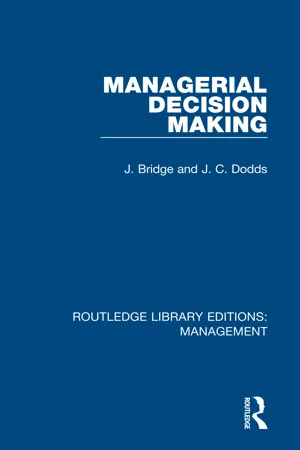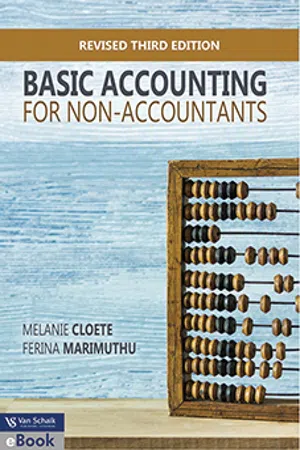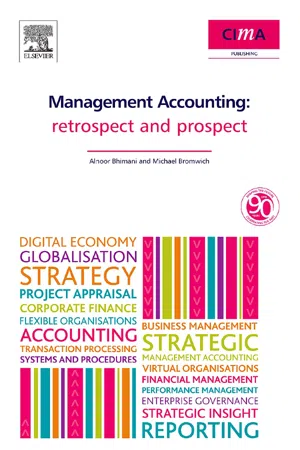Cost
Cost refers to the expenditure incurred in the production of goods or services. It encompasses various expenses such as raw materials, labor, and overhead. Understanding and managing costs is crucial for businesses to ensure profitability and efficiency in operations. By analyzing and controlling costs, businesses can optimize their resources and improve their financial performance.
7 Key excerpts on "Cost"
- eBook - ePub
Project Management Accounting
Budgeting, Tracking, and Reporting Costs and Profitability
- Kevin R. Callahan, Gary S. Stetz, Lynne M. Brooks(Authors)
- 2011(Publication Date)
- Wiley(Publisher)
...In this chapter, we introduce the basics of Cost and help project managers better understand how those basics may relate to their projects. Definition and Purpose of Cost Cost is the measurement of resources that must be expended in order to obtain an object or complete an activity. Cost is usually expressed in monetary terms, as in employee time; the materials to manufacture an object may be represented by their monetary value. Cost normally falls into the domain of managerial accounting and has four essential purposes. It is used for planning for future activities or budgets. It is used for decision making throughout an organization. It is used to compare actual results with budgets and determine why there are variances. It is used to calculate income from the company's operations and projects. The nature and form of Cost can vary across organizations. In the United States, there are three basic types of organizations: manufacturing, retail, and service. Although manufacturing once was the greatest portion of the U.S. economy, the retail sector is also significant, and the service sector now actually makes up the largest portion of the economy. Cost Classifications Costs are classified according to the purpose of the Cost information that is sought (see Exhibit 4.2). Product and period Costs provide information needed to create external financial statements, such as the income statement and balance sheet. Cost behavior helps a company look into the future by seeing how Costs may change based on other changing variables, such as demand or production rate, or how a fixed Cost affects different situations...
- eBook - ePub
- J. Bridge, J. C. Dodds(Authors)
- 2018(Publication Date)
- Routledge(Publisher)
...4 Cost Analysis 4-1 Introduction Cost in its broadest sense means sacrifice, typically a sacrifice of purchasing power, but it is important to think of the wider meaning because it is possible to incur Costs without any transfer of cash taking place. Business decisions revolve around private Costs which include all outlays made by the firm on materials, labour, land, capital, energy and so on. Social Costs, i.e. those sacrifices made by society, to enable businesses to operate include damage to the environment through smoke and waste products, spoilage of the appearance of the landscape, congestion of roads, and disruption of community life. Any organisation with an objective of public responsibility will of course pay heed to social Costs such as these, but in so far as they do not influence the profits of a firm directly they tend to take second place to private Costs which do have a direct influence on the well-being of the organisation. The usual problems of estimation and informational deficiencies are compounded by the lack of an unequivocal definition of Cost. In practice it is impossible to give a straightforward answer to the question, ‘What is the Cost of producing this item?’ This applies to the book you are now reading, the table at which you are sitting and indeed almost any other manufactured product you could mention. Yet for purposes of Cost control or managerial decision making it is vital that some financial measure is ascribed to Cost. It is rather easier to provide figures for control purposes than it is for evaluation of alternatives since control relies on comparison of reality with predetermined standards to detect variations from the desired state of affairs (see Chapter 1). So long as some benchmark for product Cost is set the control system can be workable through the detection of variances. Consequently managers must be very wary when evaluating alternatives, of using Cost information prepared by accountants largely for control purposes...
- Michael Chibili(Author)
- 2019(Publication Date)
- Routledge(Publisher)
...For most hospitality operations as much as 90% of all revenues are used to pay for Costs. For this reason, Cost management is very important. One way of controlling Costs in order to improve net income is through Cost budgeting and analysis. Before proceeding with the types of Costs, it is necessary to note that accountants generally employ Cost functions that are linear. This is based on a certain number of assumptions which will be summarized below: • Fixed Costs are assumed to remain constant over different levels of production activity • Variable Costs are assumed to vary with different levels of production activity but are constant per unit of output • It is assumed that all Costs can be separated into either fixed or variable • It is assumed that the levels of efficiency and productivity remain constant over all production activity levels • It is assumed that Costs behaviour can be explained by causing changes on any one of the related independent variables. Costs may have been incurred in the past, as well be a Cost for the future. In such a case the alternative use of resources may play an important role in the decision to go ahead with possibly incurring that future Cost. 9.2 Types of Costs Before any analysis of Costs is done within an organization, a comprehensive understanding of its Costs structure is necessary. This understanding can only result from knowing all the types of Costs that can exist within an organization. Following is a basic description of the various types of Costs. Standard Cost Standard Cost is the measure of how much a product or service should normally Cost based on a given volume or sales. These Costs have to be established by each organization based on past experiences because the many factors that influence standard Costs differ from organization to organization...
- eBook - ePub
- Cloete M, Marimuthu F(Authors)
- 2019(Publication Date)
- Van Schaik Publishers(Publisher)
...162 9 Cost classification and terminology Outcomes At the end of this chapter students should be able to classify Costs into their various categories. Chapter outline 9.1 The Cost concept 9.2 Cost classification in relation to the product or period 9.2.1 Manufacturing Costs (product Costs) 9.2.2 Non-manufacturing Costs (period Costs) 9.3 Cost classification in relation to volume of production (Cost behaviour) 9.3.1 Fixed Costs 9.3.2 Variable Costs 9.3.3 Semivariable, semifixed or mixed Costs 9.4 Separating a mixed Cost 9.5 Cost classification for control or evaluation 9.5.1 Controllable and non-controllable Costs 9.6 Cost classification for decision making 9.6.1 Relevant Costs 9.6.2 Irrelevant Costs 9.1 The Cost concept Costs can be defined in a number of ways, depending on one’s point of view. For the purpose of Cost and management accounting, a Cost is defined as follows: A Cost is a resource that is sacrificed or foregone in order to achieve a specific objective. In other words, Costs are incurred to ensure a future profit. 9.2 Cost classification in relation to the product or period The process of classifying Costs and expenses begins by relating them to the different phases in a business’s operation. In a manufacturing organisation, the total operating Cost consists of manufacturing and non-manufacturing Costs. 9.2.1 Manufacturing Costs (product Costs) These are Costs that are associated with the manufacturing of certain products, which include direct materials, direct labour and manufacturing (factory) 163 overheads. Direct material and direct labour may be combined into a classification called prime Cost...
- eBook - ePub
- David Horner(Author)
- 2020(Publication Date)
- Kogan Page(Publisher)
...08 An introduction to business Costing Introduction A business will only earn a profit if its revenue earned exceeds the Costs and expenses that the firm incurs in generating sales. Profits can be increased if either sales can be increased or Costs can be reduced. Therefore knowledge of the Costs that are generated through business activity is particularly important for the profitability of the business. Costing as a distinct accounting topic for study is concerned with the analysis of Costs incurred by the business – not only past and present Costs but also expected future Costs. Costing is normally concerned with the generation of information internal to the business – that is, not for publication. The Costing information generated will be useful for managers making decisions about the present and future activities of the business. Some of the main aims of Costing as a branch of accounting would include the following: to monitor the location (by branch, by department, by person, etc) of where Costs are generated; to attempt to control the level of expenditure on Costs; to compare the various Costs of products and services produced by the business; to analyse the trends that emerge from past and current Cost patterns. Costing information for managers of the business will arise from many different sources. In the same way that daybooks and ledger accounts were constructed from the information contained in source documents (see Chapter 1), Costing information will be obtained from a variety of sources, such as: Cost data sheets; material purchase invoices; budgetary data; timesheets, clocking-in cards (for labour). Cost centres and Cost units In order to manage, monitor and control the Costs incurred by the business a Cost centre will often be used to monitor where within the business the Costs are being incurred. A Cost centre is a location of the business designated for the collection of Costs...
- eBook - ePub
Management and Cost Accounting
Tools and Concepts in a Central European Context
- Andreas Taschner, Michel Charifzadeh(Authors)
- 2020(Publication Date)
- Wiley-VCH(Publisher)
...In a minimum set-up, Costs are recorded first according to Cost types, that is, the type of resources consumed (e.g. manpower, material, and capital). Secondly, Costs are categorized according to their organizational origin, that is, the entity or department where the Costs have been incurred. These organizational units are called Cost centers. Finally, Costs must be measured for the ultimate Cost units, that is, the products and services the company sells to customers. In a more advanced set-up, Cost accounting systems can also cope with recording Cost data for additional Cost objects, such as customers, projects, or individual activities. When recording Cost types, Costs are categorized as either direct Cost or indirect Cost. Indirect Costs cannot be traced to Cost objects but have to be allocated according to certain rules. There are four basic principles for allocating indirect Costs: the cause-and-effect principle, the proportionality principle, the average principle and the ability-to-bear principle. Whenever possible, you should base Cost allocation on the cause-and-effect or the proportionality principle. Those are the only ones that are based on a verifiable, economic rationale. With respect to the time dimension, accounting systems should include retrospective as well as prospective data, such as forecasts and budgets. In order to structure time, in business practice, accounting systems work in periods. These are recurring accounting cycles, with the calendar month being the most preferred time period. When designing Cost accounting systems, companies strive to meet the following principles: relevance, accuracy, completeness, consistency, objectiveness, timeliness, flexibility, and Cost effectiveness. GLOSSARY Ability-to-bear principle A Cost allocation principle that allocates indirect Cost based on a Cost object's ability to bear Costs. The allocation base is a performance measure such as revenues or a profitability measure...
- eBook - ePub
Management Accounting
Retrospect and Prospect
- Al Bhimani, Michael Bromwich(Authors)
- 2009(Publication Date)
- CIMA Publishing(Publisher)
...With regard to Costs, this may mean Cost information is used as if it were unambiguously ‘fit for purpose’ without the necessary understanding of the actual Cost concepts used in compiling the information. Generally, spreadsheets and other financial reports do not make explicit the types of Cost being reported. This lack of understanding is especially a danger with non-accounting managers using accounting spreadsheets. Accountants as ‘business partners’ can help here by producing spreadsheets that are customised to a manager’s requirements, and by explaining the utility of different Cost concepts for these requirements. There are many different concepts of Costs, each of which serve some purposes but may be incompatible with other uses. Below we consider which Costs may be most useful for decision making and in what circumstances. Many pedagogical texts provide simplified examples. However, the Cost concepts available for decision making are more subtle and nuanced than in current practice in management accounting. For instance, fully allocated Costs generally distort decisions. Possibly the problems associated with using inappropriate Costings for decision making are likely to be more severe in increasingly complex and volatile environments. These are the reasons why we revisit this topic. We use an economic perspective to examine the utilities of different types of Cost. The essence of Costs for decision making is that the Cost concepts used should answer the question: ‘what difference does the decision make to the firm?’ We extend our discussion in subsequent chapters with an outlook that is wide and extends outside the reaches of economistic argumentation to achieve a realism that is more reflective of what organisations and managers face today. 2.2.1. Opportunity Costs In economics, all Costs are opportunity Costs. The opportunity Cost of an input is the net revenue forgone in its next best use (see Coase, 1938)...






